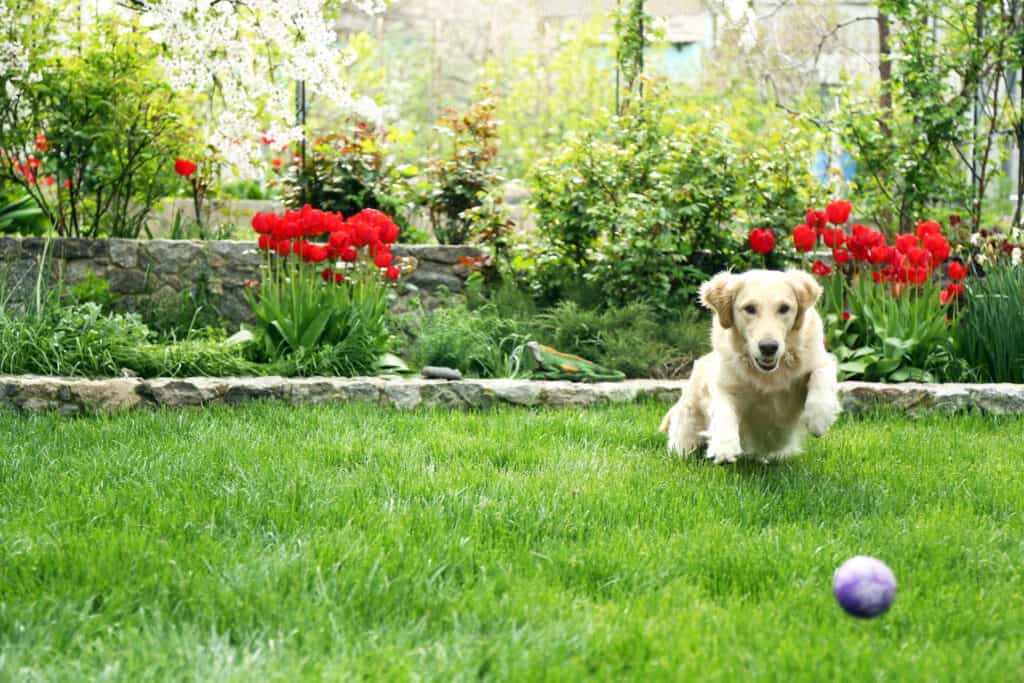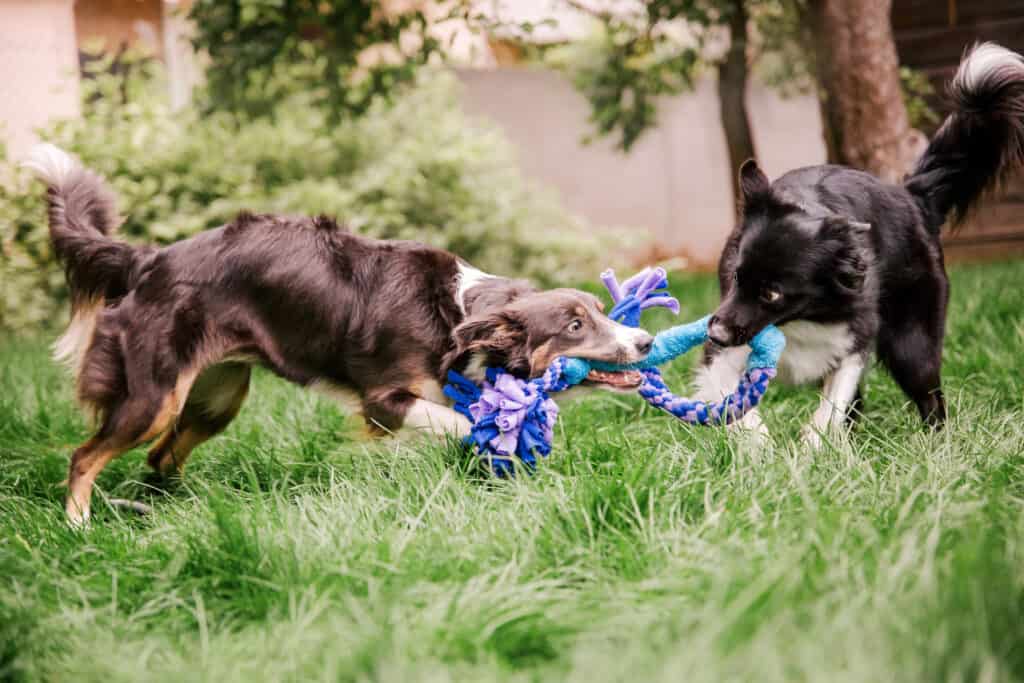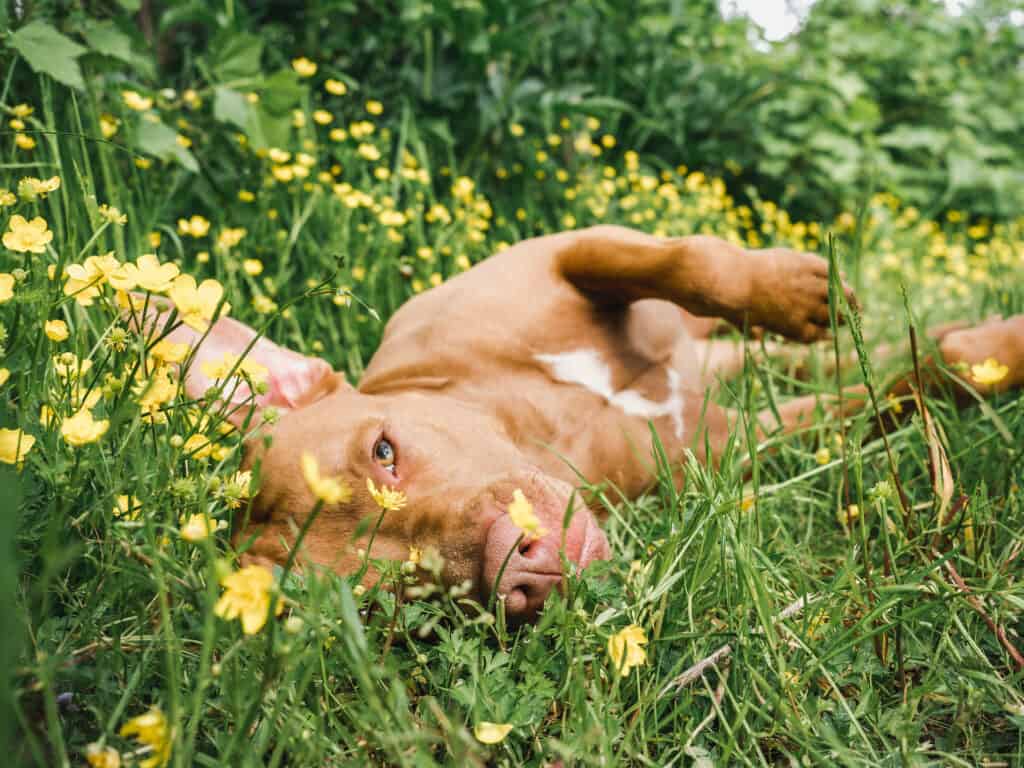
Hello M’dear!
When it comes to creating a haven for your canine companion, the backyard stands out as the perfect playground. But how can we ensure that this space is not only fun-filled, but also safe for our four-legged friends? Welcome to “Creating a Dog-Friendly Backyard: Keeping it Fun and Safe.” We’ll explore practical tips and design ideas to help you curate a backyard that strikes the perfect balance between entertainment and protection for your pet.
Creating a dog-friendly backyard includes choosing the right plants, creating safe play zones, implementing dog-friendly landscaping, and ensuring proper fencing.
Ultimately, the goal is to create a space where your dog can safely frolic, play and rest, making your backyard their own personal paradise.
Let’s start this journey to make our outdoor spaces more enjoyable and secure for our pups!
CHOOSING THE RIGHT PLANTS
One of the most crucial considerations is choosing the right plants. Plants not only contribute to the overall aesthetics of your backyard but also play a vital role in the safety and wellbeing of your dog.
Firstly, it’s crucial to recognize that certain plants are toxic to dogs. For instance, foxglove, azalea, lily of the valley, oleander, and sago palm are among many plants that are harmful or even lethal to dogs if ingested. Therefore, before you start your landscaping project, research each plant you plan to include to ensure it won’t pose a threat to your pet.
On the other hand, there are plenty of dog-safe plants that you can incorporate into your garden. These include roses, sunflowers, marigolds, snapdragons, and certain varieties of ferns and herbs like rosemary and thyme. These plants can create an appealing and colorful backyard environment without endangering your pet’s health.
Moreover, when choosing plants, it’s important to consider their durability. Dogs, especially larger breeds, can be quite rough with plants during their play sessions. Opting for sturdy plants that can withstand a little bit of rough play can keep your garden looking good despite your pet’s activities. For example, ornamental grasses, like blue fescue or feather reed grass, can add visual interest to your garden and withstand some canine curiosity and antics.
Also, think about the design and placement of your plants. Dogs are habitual creatures and tend to follow the same paths in their environment. Observe your dog’s favorite routes and avoid placing delicate plants along these paths. You could use raised beds or borders to protect certain areas, or create a designated area for your dog to play and dig.
Lastly, consider plants that have additional benefits for dogs. For instance, plants like lemon balm and lavender are known for their calming properties, and they can make a positive impact on your dog’s mood.
Creating dog-friendly backyard requires careful selection and placement of plants. Prioritize non-toxic, durable plants and thoughtful garden design to ensure a backyard that is both beautiful and safe for your dog to enjoy.
SAFE PLAY ZONES
A well-considered, dog-friendly backyard extends beyond just the flora. Crafting safe play zones is crucial for your pet’s physical exercise, mental stimulation, and overall happiness. Let’s delve into what makes a play zone both fun and safe for your dog.
Firstly, consider the size of your pet and their breed-specific behaviors. Larger dogs need more space to run and play, while smaller breeds or less active dogs may be content with a smaller area. Dogs with a natural instinct for digging, like terriers, might benefit from a designated digging zone filled with pet-safe sand or soil.
Once you’ve defined the space, the ground material is the next critical factor. Grass is a classic choice that’s gentle on paws, but it can suffer from heavy play and might need frequent maintenance. Alternatively, materials like bark mulch or artificial turf can be durable and easy on your dog’s paws. However, avoid using cocoa mulch, which contains theobromine, a substance harmful to dogs if ingested.
Next, think about what activities your dog enjoys. If they love fetching, ensure the play zone has enough unobstructed space for this. If your dog enjoys climbing or agility-based activities, consider installing safe play equipment like dog ramps, tunnels, or jumps. Always ensure these are suitable for your dog’s size and fitness level.
Shade is another critical factor, especially during hot weather. A shaded play zone can provide a safe space for your dog to cool down and rest after their playtime. You can create shade with trees, a pergola, or even a simple shade sail.
Incorporating a water feature, like a splash pad or a pet-friendly fountain, can provide dogs with a fun way to cool down on hot days. Ensure that the water is clean and shallow enough to prevent any risk of drowning.
Lastly, it’s crucial to secure the area. Fencing should be sturdy and tall enough to prevent your dog from jumping over. Also, check for any gaps or loose panels where your dog could escape. We’ll talk about this in more depth a little later.
By investing time in creating safe play zones in your backyard, you ensure your dog has a stimulating, enjoyable, and secure outdoor space that caters to their instincts and behaviors.

DOG FRIENDLY LANDSCAPING
Landscaping a backyard that’s not just beautiful, but also dog-friendly can seem like a daunting task. However, with a thoughtful approach, it is possible to strike a balance between maintaining the aesthetics of your outdoor space and ensuring it’s a safe and fun place for your dog.
One crucial aspect of dog-friendly landscaping is the selection of hardy, non-toxic plants, as discussed earlier. But beyond plant choice, the layout of your landscape plays a significant role. Dogs love exploring their environment, so incorporating a variety of textures and heights in your garden can provide mental stimulation. Using raised beds or sturdy borders can also protect your plants from playful pups and channel their activities to more appropriate areas.
If your dog loves to patrol the perimeter of your yard, consider creating a dedicated pathway. This can be made from a variety of materials such as brick, gravel, or wood chips, and it can help to save your lawn and flower beds from being worn down by your pet’s regular rounds.
An important consideration in your landscape design is shade. While we already discussed its importance in play zones, it’s essential to provide shaded areas throughout your garden to protect your pet from overheating. This can be achieved through tree canopies, pergolas, or shade sails.
Water features can be a great addition to a dog-friendly garden, adding beauty and offering your pet a place to cool down. However, ensure these features are safe for your dog, with no risk of drowning or access to harmful cleaning chemicals.
As dogs are instinctively attracted to marking their territory, it can be helpful to designate a specific spot as a ‘bathroom area.’ This could be a corner of the yard with easy-to-clean gravel or mulch, helping to keep the rest of your yard clean.
With these guidelines, you can create a landscape that’s both appealing to the eye and an inviting and safe place for your dog. Remember, a dog-friendly landscape is about more than just aesthetics; it’s about creating an environment where your dog can behave naturally and safely.
PROPER FENCING
Ensuring your backyard is well-fenced is an essential aspect of creating a dog-friendly space. A solid and reliable fence not only maintains your dog’s safety but also provides peace of mind for you as an owner. However, choosing the right kind of fencing depends on several factors including your dog’s breed, size, and behavior.
To begin with, the height of the fence is a primary concern. Generally, a fence should be at least six feet high to prevent most dogs from jumping over it. However, if your dog is a known jumper or climber, you might need a taller fence. Additionally, adding a slight inward angle to the top of the fence can discourage even the most determined climbers.
The material of the fence is also crucial. Wooden fences provide solid barriers that prevent dogs from seeing through, which can be useful if your dog is easily provoked by outside stimuli like passing cars or pedestrians. Alternatively, chain-link fences can be a cost-effective solution, though they offer less privacy and could potentially allow your dog to climb.
Visibility can be a double-edged sword. While it’s great for your dog to have a view, it can also lead to behavioral issues such as excessive barking or attempts to escape. If you prefer a fence that your dog can see through, consider a hybrid model, using solid panels at the bottom for privacy and see-through panels at the top for visibility.
Underground fencing, whether it’s an actual buried fence or an invisible electronic one, is another aspect to consider. Some dogs are diggers, and without appropriate barriers, they can easily tunnel under a fence. Buried chicken wire or concrete footers can prevent digging, while electronic fences can deter a dog from approaching the boundary. Keep in mind, however, that electronic fences may not work for all dogs and can have ethical considerations.
The gate is another vital part of the fencing. Ensure it has a robust latch that your dog can’t open, and consider a lock if your gate is accessible from the front yard or street. For added security, install a spring mechanism so the gate closes automatically after being opened.
Regular maintenance of your fence is key. Regularly check for any gaps, holes, or weakened areas and fix them promptly to prevent your dog from escaping.
Proper fencing for a dog-friendly backyard should be robust, of an adequate height, and designed with your specific dog’s behavior in mind. A well-fenced yard will give your dog the freedom to explore safely while giving you peace of mind.

THOUGHTS
Creating a dog-friendly backyard requires careful planning and consideration, but the rewards are manifold. By crafting an environment that caters to your dog’s physical needs, mental stimulation, and safety, you’re offering them a personal paradise, right at home.
Selecting the right, non-toxic plants is a vital first step. This not only ensures your garden remains vibrant and beautiful but also keeps your dog safe from potential harm. Furthermore, creating designated play zones suited to your dog’s size, breed, and preference for certain activities provides them with the physical stimulation they need.
When it comes to landscaping, a well-thought-out design can cater to your dog’s natural behaviors, while adding texture and appeal to your yard. Integrating pathways for patrolling, shaded areas for rest, and possibly a water feature can make your backyard a stimulating environment for your pet.
Proper fencing, finally, is a non-negotiable aspect of a dog-friendly backyard. A sturdy, adequately high fence will keep your dog safely within your property boundaries and shield them from potential distractions or dangers beyond.
Remember, every dog is unique. Their size, breed, age, and temperament should guide your decisions as you design your dog-friendly backyard. A successful dog-friendly backyard design isn’t just a delightful oasis for your furry friend; it’s a space where safety and fun harmoniously coexist, giving you peace of mind and your dog a slice of canine bliss.
Happy playful dog days of Summer!
Liza
